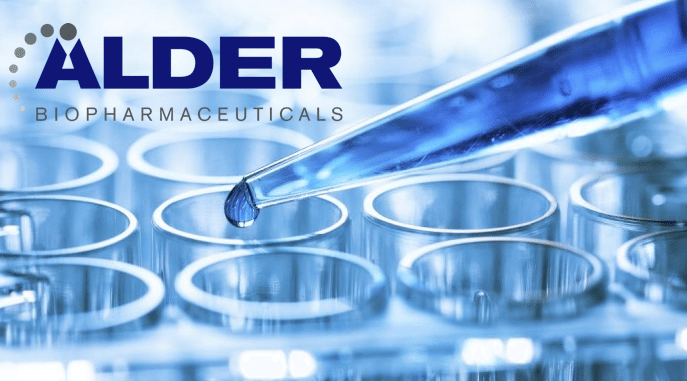
Back in March, we discussed Alder Biopharmaceuticals Inc (NASDAQ:ALDR)’s lead migraine candidate ALD403. The company had just reported topline from it’s a phase IIb in a chronic migraine indication, and gained some strength at the time on the back of some strong trial data. That was just the beginning, however, and marked the start of what promised to be a busy period for Alder and its shareholders.
Two further events were planned for 2016, each of which had the potential to boost the company ahead of an NDA submission. The first, follow up data from the phase IIb. The second, the initiation of PROMISE 2. We just got the first, and it looks good once again for Alder.
Before we get into what it showed, let’s quickly recap the details surrounding the drug itself. As mentioned, it’s a migraine indication called ALD403, and it’s part of a family of drugs called calcitonin gene-related peptide (CGRP) inhibitors. CGRP is a protein formed in the grey matter in our spine, and it plays an important role in pain transmission. It’s also a vasodilator. We went into the science in plenty of detail in our previous analysis, but to quickly go over it again, migraines are caused by vasodilation (in contrast to standard headaches, which are caused by vasoconstriction). CGRP causes both vasodilation and pain transmission, so by inhibiting the CGRP protein, ALD403 should counter both the root cause of the migraine and the primary symptom – i.e. the pain.
Three other companies are developing their own versions of this type of treatment – Amgen, Inc. (NASDAQ:AMGN), Teva Pharmaceutical Industries Ltd (ADR) (NYSE:TEVA) and Eli Lilly and Co (NYSE:LLY) – and it’s looking like its going to be the next big thing in migraine therapy. The question is, which company can pick up the largest share of the market? That’s where the latest data comes in to play.
In the follow up, the data showed that the drug pretty much maintained efficacy across a 24-week period as was reported in the 12-week data. There was a slight reduction – 31% to 33% of patients (depending on the dose) reporting at least a 75% reduction in migraine days versus between 29% and 31% at 24 weeks, but it sill came in at a considerable improvement over placebo (20% at 24 weeks).
This is great, but perhaps just as importantly, these results came from a one time 30 mg dose. The company’s competitors all require more frequent and/or higher dosing. Additionally, this data came from an IV dose, but the durability it infers opens up the possibility for a subcutaneous administration. Subcutaneous is self administration, similar to SA insulin, and a patient could do it at home. If Alder wanted a differentiator to take to market that is going to set it apart from its big name competitors, self admin sub C dosing plays that role nicely. The company completed a phase I in healthy patients that demonstrated a comparable level of suppression of peripheral CGRP biology for a full three months with single intravenous, subcutaneous or intramuscular injection dosing. Chances are Alder will submit this as part of the NDA in support of a sub C dosing approval.
So what are we looking at going forward? Well, the initiation of the PROMISE2 trial is a big milestone, and we’d like to see some hint at sub C dosing built in to the trial. We may not, and the company may rest on the above mentioned phase I data for its application, but some pivotal data supporting the thesis would help if it can structure the trial in that way. PROMISE2 initiation should come at some point across the coming months. Beyond that, we’re looking to PROMISE1 data as an upside catalyst. The release is scheduled for the first half of 2017.
And that’s where things stand. We’ve got some great follow up data that supports a push for sub C administration, which if achieved, could give the company the edge when it competes against the big players in the space come commercialization. As we said last time, one to watch heading into the close of the year and beyond.




